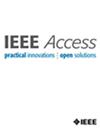HuberAIME:在异常值存在下的可解释AI的鲁棒方法
IF 3.4
3区 计算机科学
Q2 COMPUTER SCIENCE, INFORMATION SYSTEMS
引用次数: 0
摘要
近年来,随着机器学习模型的准确性不断提高,可解释的人工智能(XAI)变得至关重要,它允许理解这些模型做出的内部决策。然而,许多解释方法容易受到异常值和噪声的影响,并且结果可能被极值扭曲。本文设计了一种新的方法HuberAIME,它是近似逆模型解释(AIME)的一种变体,对Huber损失具有鲁棒性。HuberAIME通过迭代加权最小二乘来限制异常值的影响,防止了AIME的特征重要性估计被极端数据点降低。使用Wine数据集(几乎没有异常值)、Adult数据集(包含极端值)和Statlog(德国信用)数据集(具有中等异常值)进行对比实验,以证明所提出方法的有效性。SHapley Additive explanation、AIME和HuberAIME采用6个指标(解释准确性、稀疏性、稳定性、计算效率、稳健性和完整性)进行评估。HuberAIME等同于Wine数据集上的AIME。然而,它在成人数据集上的表现优于AIME,表现出高保真度和稳定性。在德国信用数据集上,AIME本身表现出一定的稳健性,AIME与HuberAIME之间没有显著差异。总的来说,HuberAIME对于包含严重异常值的数据是有用的,并且在少数异常值的情况下保持与AIME相同的解释性能。因此,作为一种强大的XAI方法,HuberAIME有望提高实际操作的可靠性。本文章由计算机程序翻译,如有差异,请以英文原文为准。
HuberAIME: A Robust Approach to Explainable AI in the Presence of Outliers
With the increasing accuracy of machine-learning models in recent years, explainable artificial intelligence (XAI), which allows for an understanding of the internal decisions made by these models, has become essential. However, many explanation methods are vulnerable to outliers and noise, and the results may be distorted by extreme values. This study devised a new method named HuberAIME, which is a variant of approximate inverse model explanations (AIME) and is robust to the Huber loss. HuberAIME limits the impact of outliers by weighting with iterative reweighted least squares and prevents the feature importance estimation of AIME from being degraded by extreme data points. Comparative experiments were conducted using the Wine dataset, which has almost no outliers, the Adult dataset, which contains extreme values, and the Statlog (German Credit) dataset, which has moderate outliers, to demonstrate the effectiveness of the proposed method. SHapley Additive exPlanations, AIME, and HuberAIME were evaluated using six metrics (explanatory accuracy, sparsity, stability, computational efficiency, robustness, and completeness). HuberAIME was equivalent to AIME on the Wine dataset. However, it outperformed AIME on the Adult dataset, exhibiting high fidelity and stability. On the Germain Credit dataset, AIME itself showed a certain degree of robustness, and there was no significant difference between AIME and HuberAIME. Overall, HuberAIME is useful for data that include serious outliers and maintains the same explanatory performance as AIME in cases of few outliers. Thus, HuberAIME is expected to improve the reliability of actual operations as a robust XAI method.
求助全文
通过发布文献求助,成功后即可免费获取论文全文。
去求助
来源期刊

IEEE Access
COMPUTER SCIENCE, INFORMATION SYSTEMSENGIN-ENGINEERING, ELECTRICAL & ELECTRONIC
CiteScore
9.80
自引率
7.70%
发文量
6673
审稿时长
6 weeks
期刊介绍:
IEEE Access® is a multidisciplinary, open access (OA), applications-oriented, all-electronic archival journal that continuously presents the results of original research or development across all of IEEE''s fields of interest.
IEEE Access will publish articles that are of high interest to readers, original, technically correct, and clearly presented. Supported by author publication charges (APC), its hallmarks are a rapid peer review and publication process with open access to all readers. Unlike IEEE''s traditional Transactions or Journals, reviews are "binary", in that reviewers will either Accept or Reject an article in the form it is submitted in order to achieve rapid turnaround. Especially encouraged are submissions on:
Multidisciplinary topics, or applications-oriented articles and negative results that do not fit within the scope of IEEE''s traditional journals.
Practical articles discussing new experiments or measurement techniques, interesting solutions to engineering.
Development of new or improved fabrication or manufacturing techniques.
Reviews or survey articles of new or evolving fields oriented to assist others in understanding the new area.
 求助内容:
求助内容: 应助结果提醒方式:
应助结果提醒方式:


